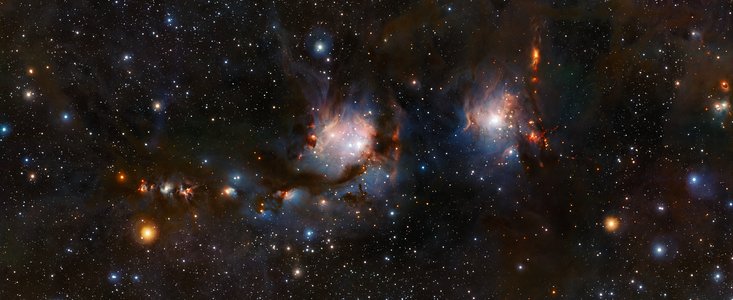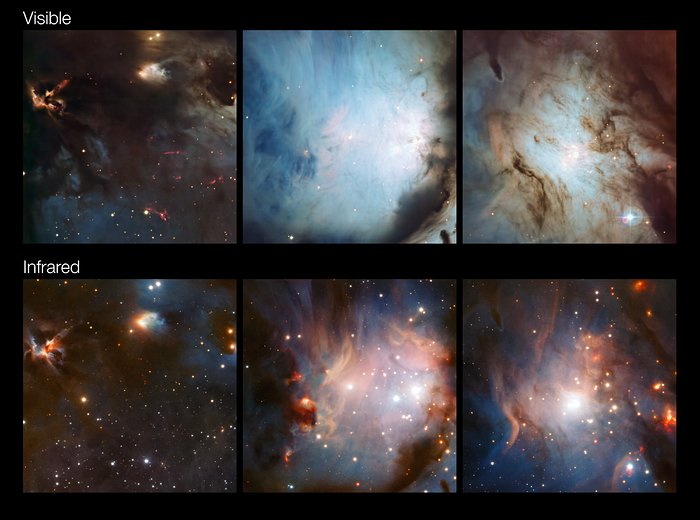

| Online: | |
| Visits: | |
| Stories: |

| Story Views | |
| Now: | |
| Last Hour: | |
| Last 24 Hours: | |
| Total: | |
Dustbuster Reveals Hidden Stars
In this new image of the nebula Messier 78, young stars cast a bluish pall over their surroundings, while red fledgling stars peer out from their cocoons of cosmic dust. To our eyes, most of these stars would be hidden behind the dust, but ESO’s Visible and Infrared Survey Telescope for Astronomy (VISTA) sees near-infrared light, which passes right through dust. The telescope is like a giant dustbuster that lets astronomers probe deep into the heart of the stellar environment.

Credit: ESO
Credit: ESO/S. Brunier/Chris Johnson, (cuttinedgeobservatory.com). Music: Mylonite Recordz Production
When observed with visible light instruments, like ESO’s Wide Field Imager at the La Silla Observatory, Messier 78 appears as a glowing, azure expanse surrounded by dark ribbons (see eso1105). Cosmic dust reflects and scatters the light streaming from the young, bluish stars in Messier 78’s heart, the reason it is known as a reflection nebula.
These comparison cutouts show how differently parts of this rich star-forming complex in Orion appear at different wavelengths. In the infrared images from the VISTA telescope (lower row) the dust is much more transparent than in the visible light pictures from the MPG/ESO 2.2-metre telescope (upper row).

Credit: ESO/Igor Chekalin
In between visible and submillimetre light lies the near-infrared part of the spectrum, where the Visible and Infrared Survey Telescope for Astronomy (VISTA) provides astronomers with crucial information. Beyond dusty reflections and through thinner portions of obscuring material, the luminous stellar sources within Messier 78 are visible to VISTA’s eyes. In the centre of this image, two blue supergiant stars, called HD 38563A and HD 38563B, shine brightly. Towards the right of the image, the supergiant star illuminating NGC 2071, called HD 290861, is also seen.
Credit: ESO/N. Risinger (skysurvey.org). Music: Johan B. Monell (www.johanmonell.com)
Besides big, blue, hot stars, VISTA can also see many stars that are just forming within the cosmic dust strewn about this region, their reddish and yellow colours shown clearly in this image. These colourful fledgling stars can be found in the dust bands around NGC 2071 and along the trail of dust running towards the left of the image. Some of these are T Tauri stars. Although relatively bright, they are not yet hot enough for nuclear fusion reactions to have commenced in their cores. In several tens of millions of years, they will attain full “starhood”, and will take their place alongside their stellar brethren
Richard Hook
ESO
Source:


